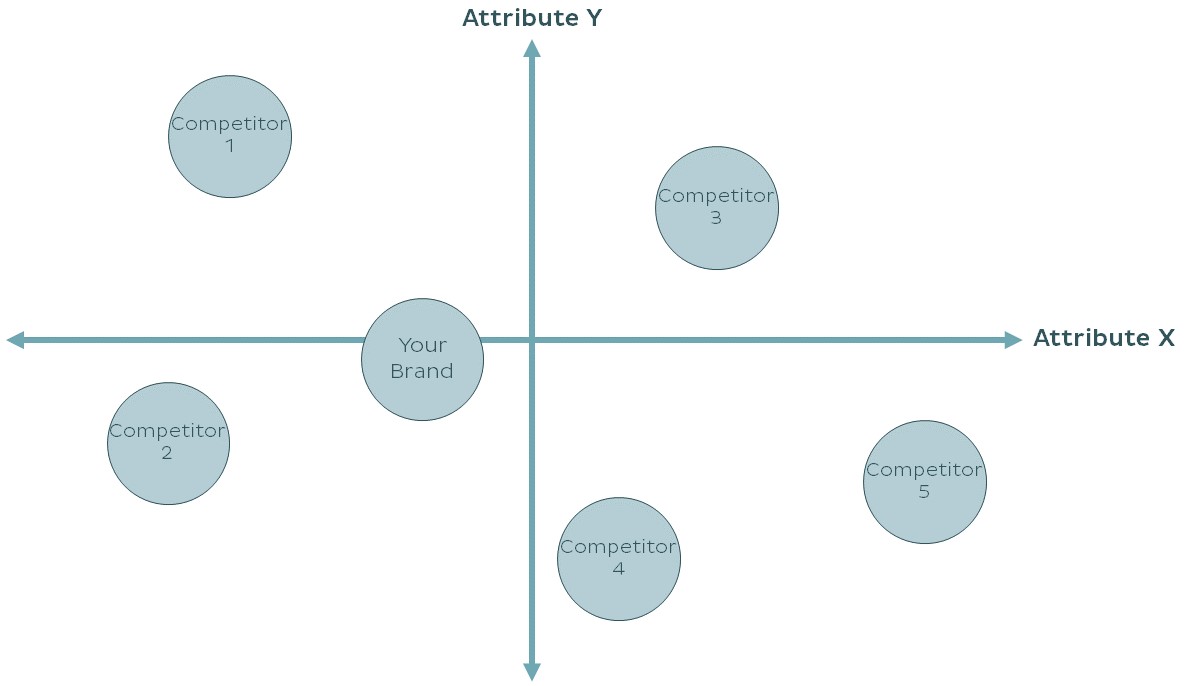Positioning is your brand’s position in the minds of customers and prospects. By definition, at the end of the day, positioning is determined by how customers perceive your brand – compared to other brands in the same market.
Thus, you should focus on how customers see your brand relative to your competitors. In this article, we will explain a simple tool that will enable you to do so: Perceptual Mapping.
What is Perceptual Mapping?
Perceptual Mapping is a tool that visualizes customers’ perceptions on different brands with respect to different attributes. Usually, it compares brands on two different attributes and pictures their relative position on the map.
Some attributes that are used for two dimensional perceptual maps are as follows:
- Price vs. Quality
- Price vs. Functionality
- Taste vs. Nutritional Value
- Emotional Benefit vs. Functional Benefit
However, you should determine the dimensions/attributes based on your brand’s and its market’s dynamics.

Two important points to note:
- Perceptual map does not have to reflect the overall perception of the company. It could be for a business unit, a product line, or a brand within the company. Different brands, business units, or products of a company might be leaving different impressions on customers. Thus, separate perceptual maps need to be created for each of them.
- Perceptual map may not be able to depict all elements of positioning. Use this tool, if applicable.
How to Create a Perceptual Map?
One of the most common mistakes made by marketers while assessing brand’s positioning is wishful thinking. You should not create it based on how you perceive your brand and its competitors. It must be built upon the data collected from customers.
In order to create a Perceptual Map, follow the steps below:
- Choose the object of comparison (company, business unit, portfolio, brand, CEO, etc.).
- Determine competitors.
- Choose the attributes to compare.
- Gather customer data evaluating each competitor with respect to each attribute.
- Place each player on the map according to the customer data.
Conclusion
Perceptual Mapping is a simple yet powerful tool for understanding your brand’s and its competitors’ positionings. If you conduct this exercise periodically, you can understand how your brand’s competitive positioning evaluates. Drawing on these, you can identify gaps or opportunities in your industry and tailor your marketing strategy correspondingly.
In order to distinguish your brand from the competitors and sustain your competitive advantage contact us and let us explain how we can help you.



